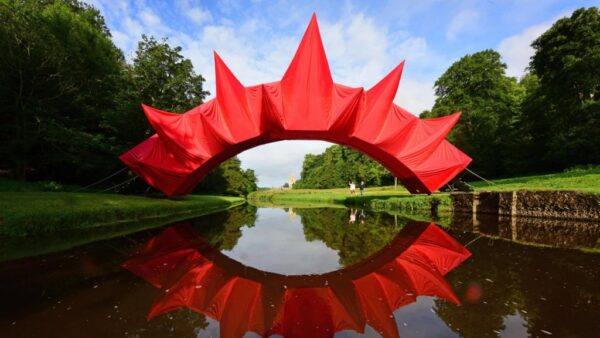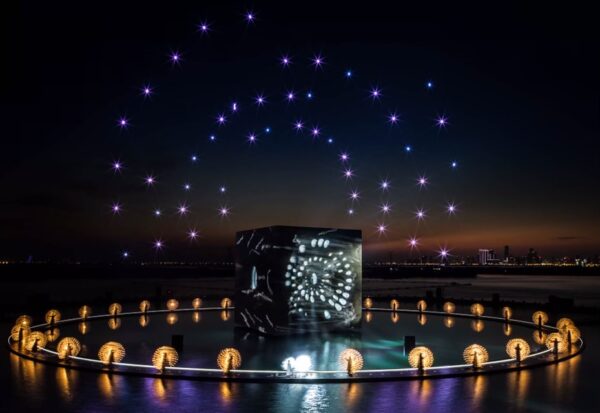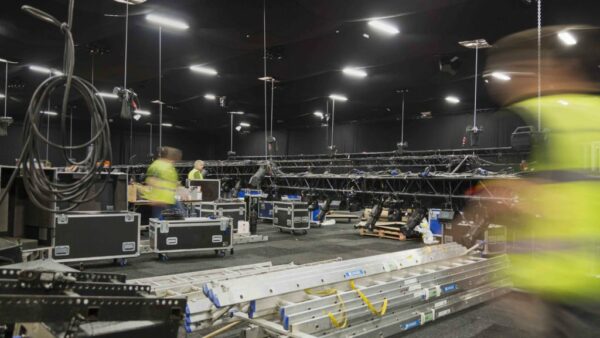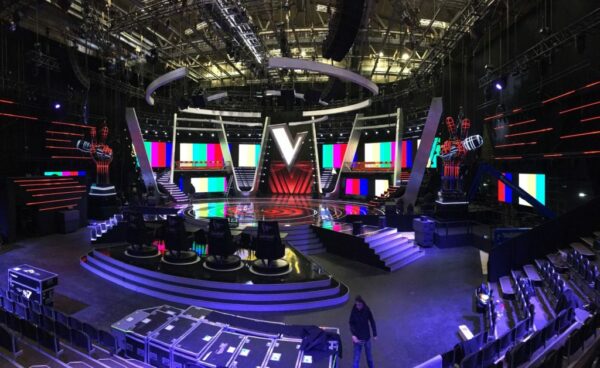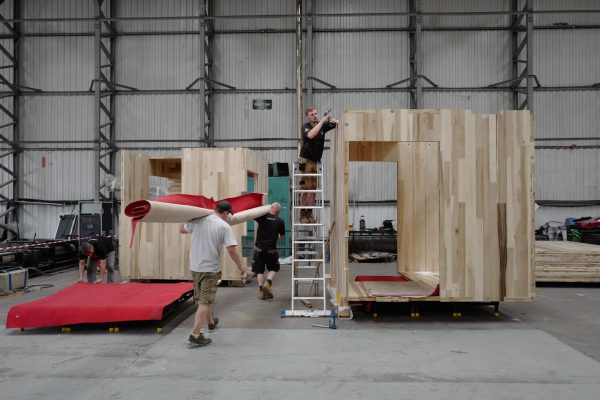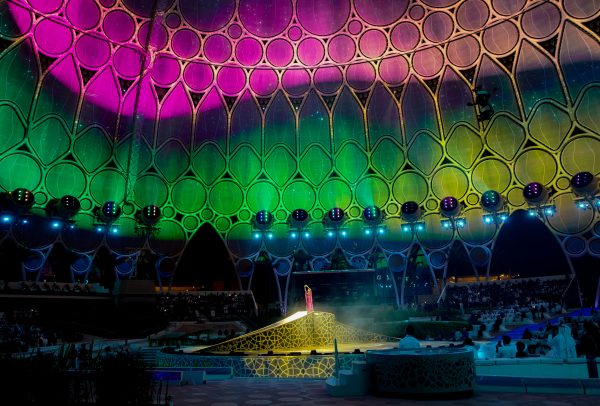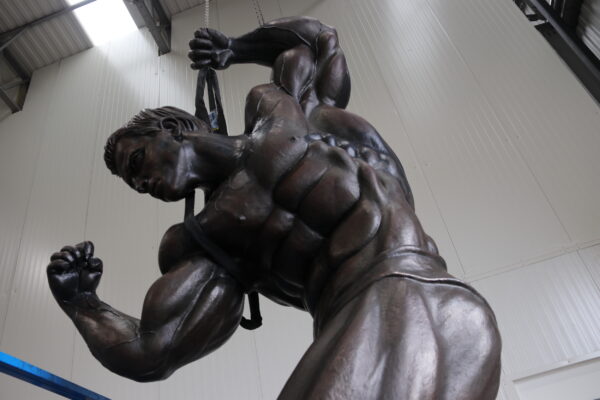
Making ideas a reality is a strange game. Sometimes it’s straightforward, sometimes it’s exceedingly hard. But all things you see on stages and screens around the world have to start somewhere. In concept to creation, we’re getting under the skin of how that happens. Take it away Flo:
Q: Morning, who are you and what do you do?
A: Hello, I’m Flora Stoneman and I’m the Finishing and Scenic Department Supervisor. I’ve been here full time for 15 years, plus a few years before that on freelance gigs.
Q: So what did you work as before?
A: Erm, good question. My brain works better if I start from the beginning. I started out with a foundation course in Graphics. Then I started to get a sense of what I really liked and ended up doing a degree in Fine Art (with my major being in Sculpture).
From there, I got involved with all sorts – mimes, Zippo Clowns, video art! The people I was around carried me into some interesting places. I even did an impromptu performance at Glasto. In front of a load of old Hippies, who thought we were “so out there”.
I ended up becoming a Scenic Artist and I loved that. I toured all over the UK following theatre shows. Then at some point I started getting jobs from this place called Stage One.
Q: Since you’ve been here, what are some of the notable projects you’ve worked on?
A: Oh, where do I even start. Priscilla Queen of the Desert, Walking with Dinosaurs, How to Train Your Dragon – that was a big one.
Q: How To Train Your Dragon was a memorable one then?
A: Oh absolutely, this huge arena show with tonnes of scenic work. I remember how committed the Designer and their teams were to getting it right. They literally stationed themselves here at our base for months. They even brought in a catering company! They were here to stay and work with us to get it right. I can’t tell you how much that sort of commitment helps. Seeing the white of people’s eyes when they’re talking about creative just…it just works so much better. You can really get into people’s heads that way.
Q: What did you do on How to Train Your Dragon?
A: I was the Head Scenic Manager. That basically meant lots of co-ordinating teams and working with the head designers on the scenic assets.
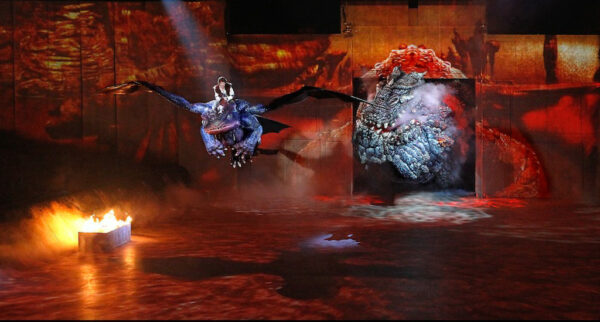
Q: Did you manage to get where the designers wanted to go?
A: I think so, I think they did too! Again, it comes back to the commitment they had. Because they were here, we could talk in the morning about how something needed to look or feel. Then we could make a mock up or start to test a technique or whatever. Then immediately sit down and say “okay, what do you think?”
And if we needed to change something, we could get it done by the end of the afternoon. It all meant that the direction for our work firmed up really quickly. And that helped us end up with a better expression of what we were making.
Q: What sort of preparation does a job like that take?
A: Well fortunately, the designer had made a 1:50 model of the dragon. That was immensely helpful. Even more helpful was that they’d got the dimensions correct! Because if you use a model as a reference and the measurements are off. Well. Let’s just say you don’t want the measurements to be off.
Aside from that, again, it’s that direct and frequent contact with the designers. Then the preparation becomes much more organic.
Q: Was there anything that stuck out as hard to get right?
A: Yes! The floor and the scale of the dragon. The floor was for an arena, so immediately – it’s massive. Working on it entirely covered one of our hangars, which aren’t small! The intent was to have this lair that looked like it had been burnt and singed to varying degrees. Imagine parchment paper, that type of texture. To start, we had to prime it entirely in white, then we had to stain it.
The staining had to be to be this gradient burning, so at the edges it looked distressed and burnt. And got less burnt as you got closer to the centre, the difficulty was, it so easily looked ‘wrong’. I kept thinking “fire wouldn’t burn it that way”. And of course, again, this thing was huge – so the entire thing just took ages.
Then for the dragon, going from small marks on the model to MASSIVE marks on our production model. That’s pretty difficult.
You know, if you’re painting something that is 50, 100 times bigger than the model, then everything behaves differently. It can be robbed of the detail or the light doesn’t really work in the same way. There are myriad ways that the essence of the idea can be lost along the way.
And it is an absolute fundamental we don’t lose that vision. Again, instincts help a lot.
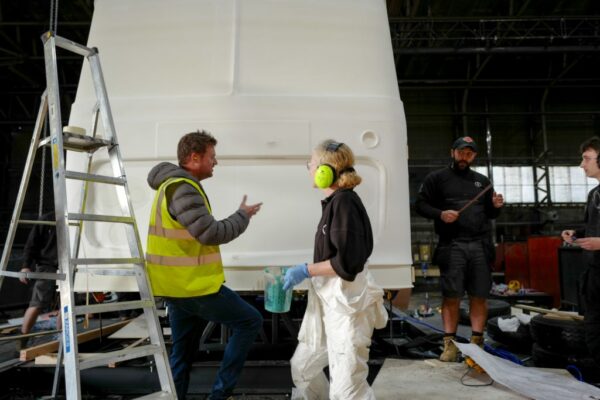
Q: So how do you stay accurate to the vision?
A: In the case of the dragon, it went on a journey. You follow the model, then use your gut. Your instincts can help stop things looking unnatural. You know in the case of burnt staging it needs to look organic. Fire doesn’t follow pre-defined lines of pixels.
Other times your gut helps you check when a discussion point comes up. That lets you sit down with the designer and work out how to preserve the essence of the vision as the final product comes into being.
Q: Have you ever had to change up you methods to achieve the vision?
A: Oh yeah, absolutely. See, we use a lot of process here. And you do need that to make sure you make good progress on projects. But in that mix you need to have intuition. We’re not a factory, everything we make is different. And doing justice to each and every project, isn’t about applying the same process to everything.
Like, for the shoe in Priscilla Queen of the Desert, we had to wrap it in Latex and Illuminextra. Which is like this big chunky reflective stuff you can see from distance.
But by time we’d got those bits done, we were coming to the last stages of painting and finishing. One day I was looking at it and something was just…missing. It just wasn’t catching the light in the way we needed for it to be the shoe of Priscilla QUEEN of the Desert. I happened to know we had some multi-colour iridescent fine glitter and I knew the last step of finishing was to apply a lacquer.
So I mixed the two together. When we finished the shoe, it had this glowing aura to it. As soon as we got that, we knew we’d delivered on the original intent of this thing.
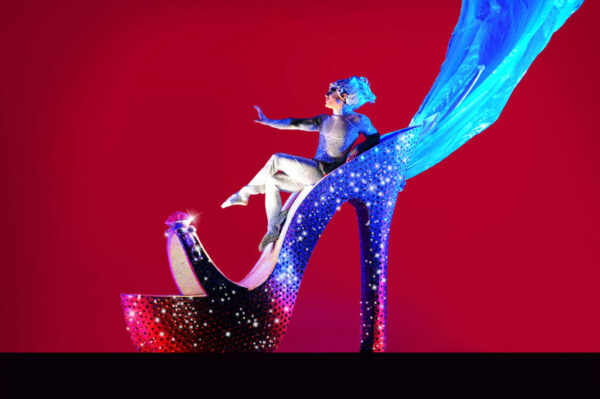
Q: Are there any projects that come in that you know you’re going to enjoy?
A: From a paint perspective, metallic stuff. Particularly on sculptures intended to be realistic. So painting sculptures of Arnie, or horses that live in a museum. You really have to get that stuff right because, everyone knows what those things look like. So you really have to do them justice when they’re under the lights and the focal point of people’s attention.
Q: What you love most about being a scenic painter?
A: I love that everything is different. And that sometimes it’s really challenging. The requirements of every project are different, I enjoy needing to know everything about it. Is it going outside or inside. Is it permanent? Does it need to go into storage? Are we going to be using pyro with it – does it need to be a little bit fireproof or does it need to be REALLY fireproof?
All of that changes how we approach the painting and finishing of samples and of course the final product. And at Stage One, projects have to go through numerous teams from CAD to the wood shop. So we have to dig, dig, dig on information.
Q: Finally, what have been your favourite project so far at Stage One?
A: Gosh I don’t know. There’s a lot. I suppose the easy answer is all the Olympic Opening Ceremonies we’ve done. I don’t think people realise that from about 2004, we’ve been involved in most the Olympic and Paralympic Opening Ceremonies that people have seen. And I’m really proud of that. Particularly 2012.
